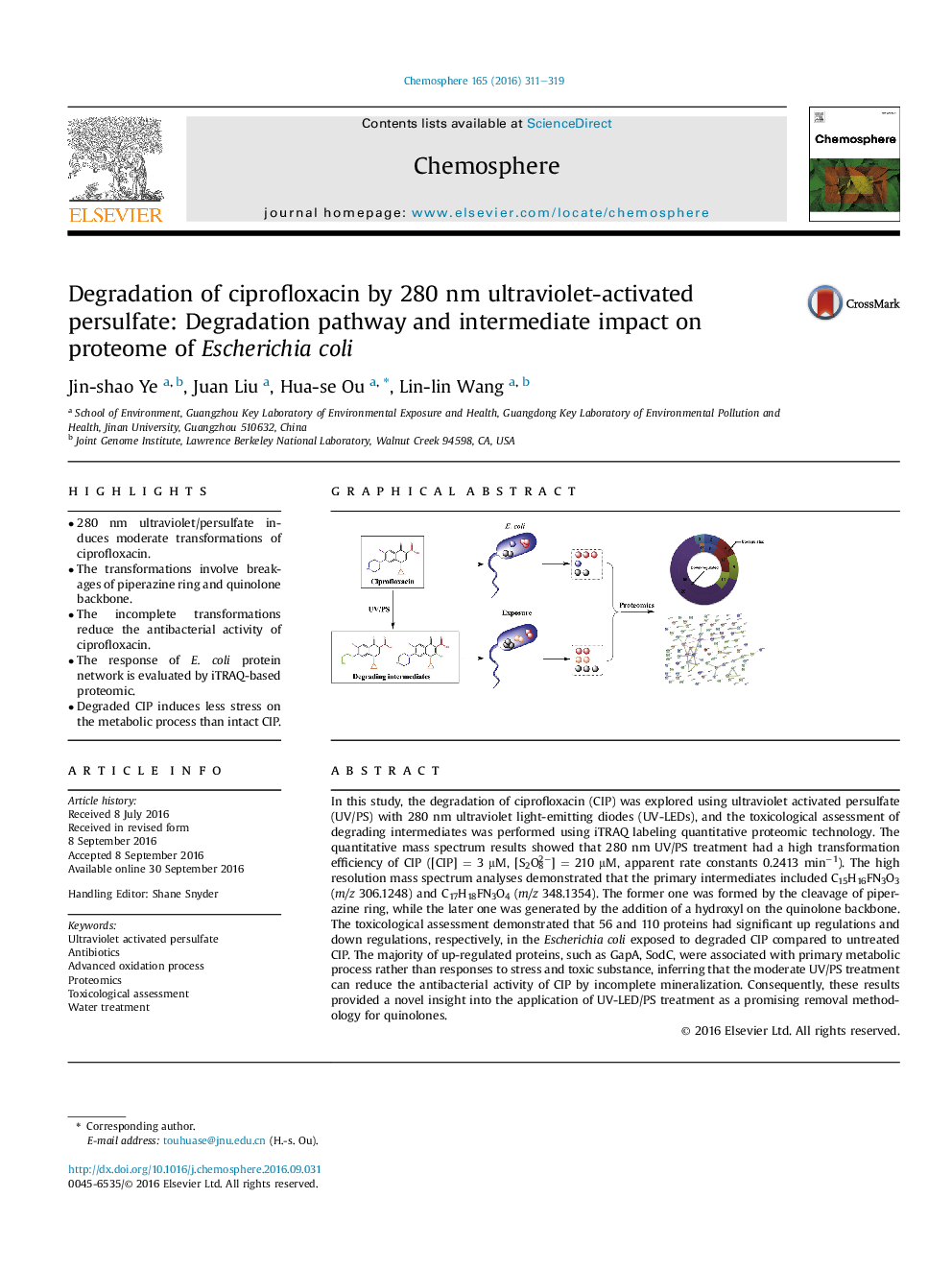| کد مقاله | کد نشریه | سال انتشار | مقاله انگلیسی | نسخه تمام متن |
|---|---|---|---|---|
| 4407342 | 1618806 | 2016 | 9 صفحه PDF | دانلود رایگان |

• 280 nm ultraviolet/persulfate induces moderate transformations of ciprofloxacin.
• The transformations involve breakages of piperazine ring and quinolone backbone.
• The incomplete transformations reduce the antibacterial activity of ciprofloxacin.
• The response of E. coli protein network is evaluated by iTRAQ-based proteomic.
• Degraded CIP induces less stress on the metabolic process than intact CIP.
In this study, the degradation of ciprofloxacin (CIP) was explored using ultraviolet activated persulfate (UV/PS) with 280 nm ultraviolet light-emitting diodes (UV-LEDs), and the toxicological assessment of degrading intermediates was performed using iTRAQ labeling quantitative proteomic technology. The quantitative mass spectrum results showed that 280 nm UV/PS treatment had a high transformation efficiency of CIP ([CIP] = 3 μM, [S2O82−] = 210 μM, apparent rate constants 0.2413 min−1). The high resolution mass spectrum analyses demonstrated that the primary intermediates included C15H16FN3O3 (m/z 306.1248) and C17H18FN3O4 (m/z 348.1354). The former one was formed by the cleavage of piperazine ring, while the later one was generated by the addition of a hydroxyl on the quinolone backbone. The toxicological assessment demonstrated that 56 and 110 proteins had significant up regulations and down regulations, respectively, in the Escherichia coli exposed to degraded CIP compared to untreated CIP. The majority of up-regulated proteins, such as GapA, SodC, were associated with primary metabolic process rather than responses to stress and toxic substance, inferring that the moderate UV/PS treatment can reduce the antibacterial activity of CIP by incomplete mineralization. Consequently, these results provided a novel insight into the application of UV-LED/PS treatment as a promising removal methodology for quinolones.
Figure optionsDownload as PowerPoint slide
Journal: Chemosphere - Volume 165, December 2016, Pages 311–319